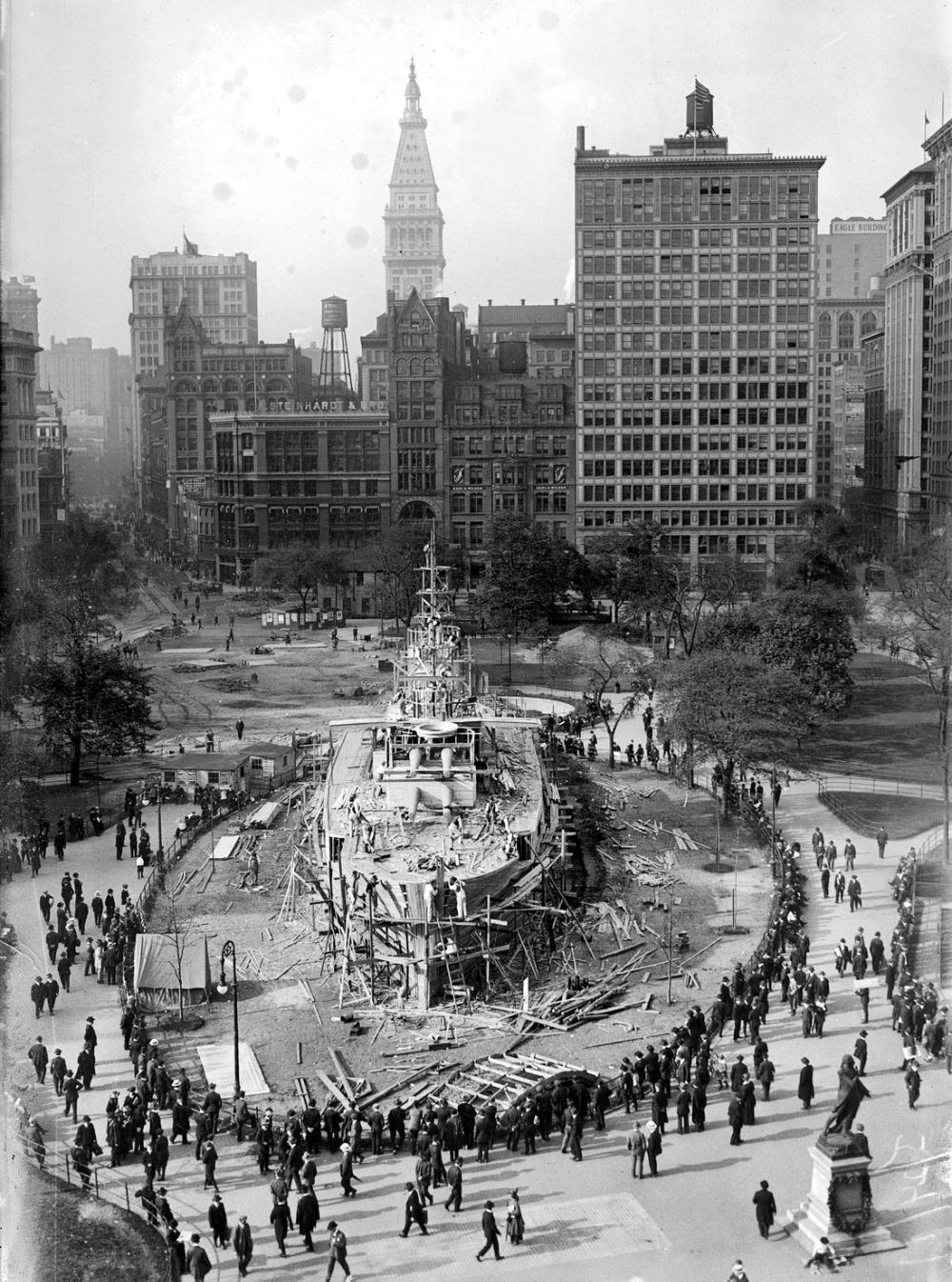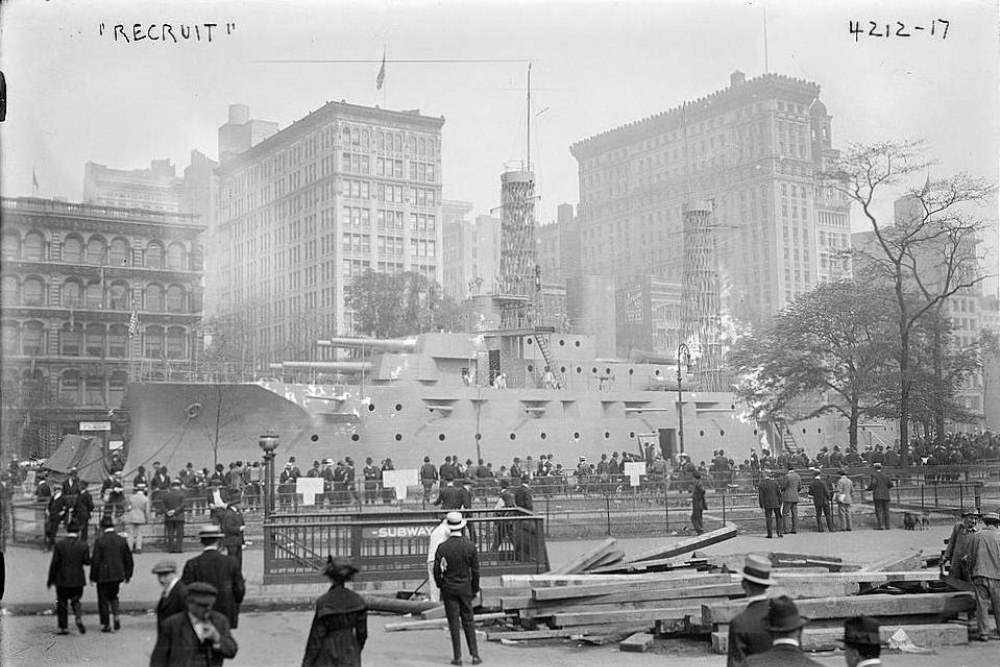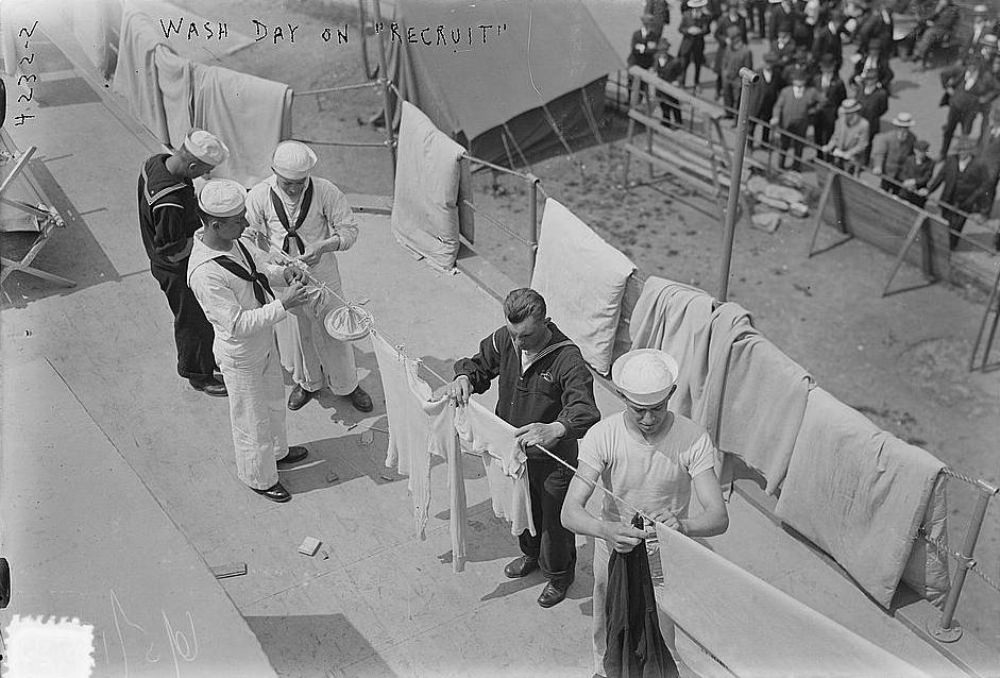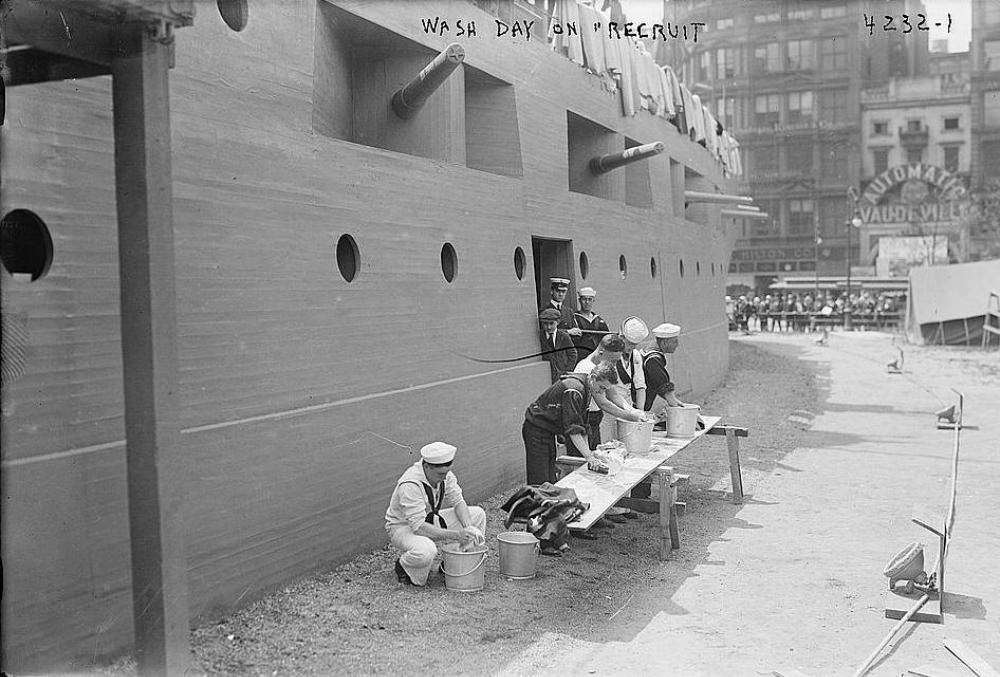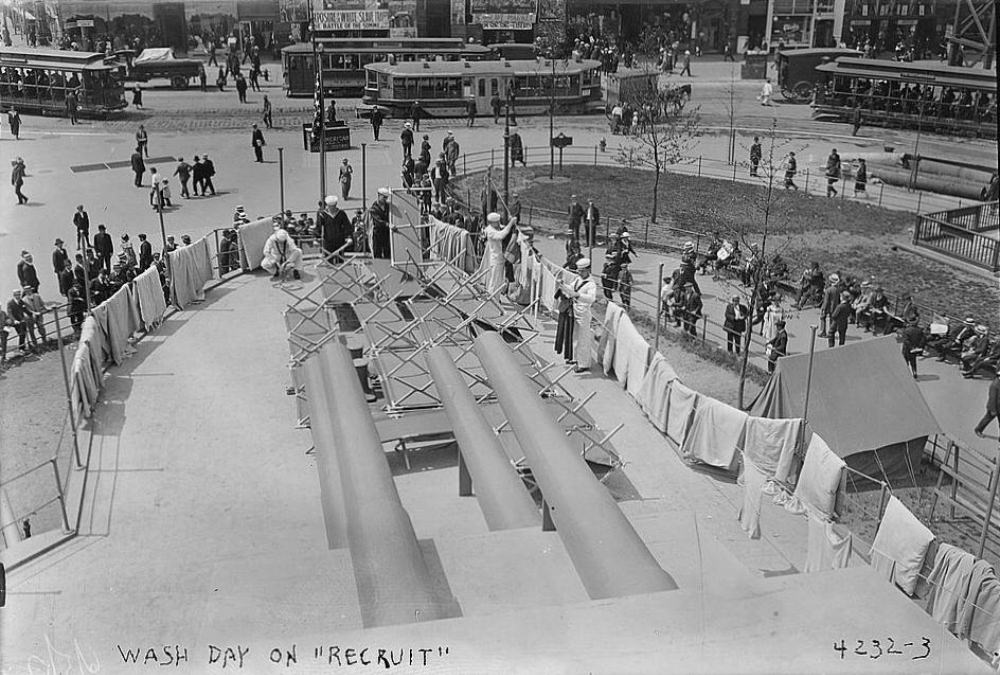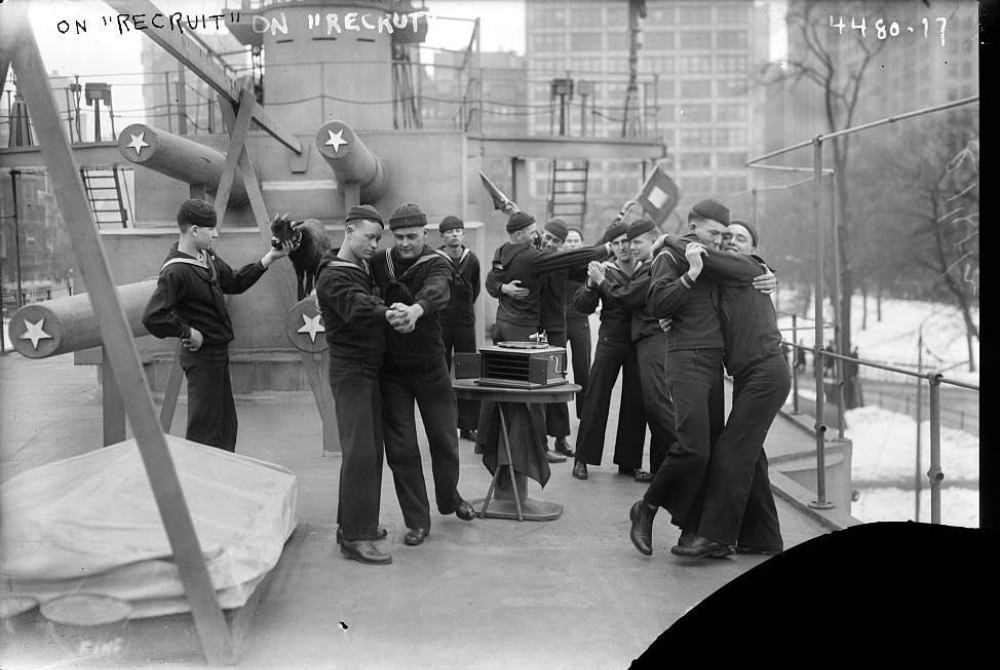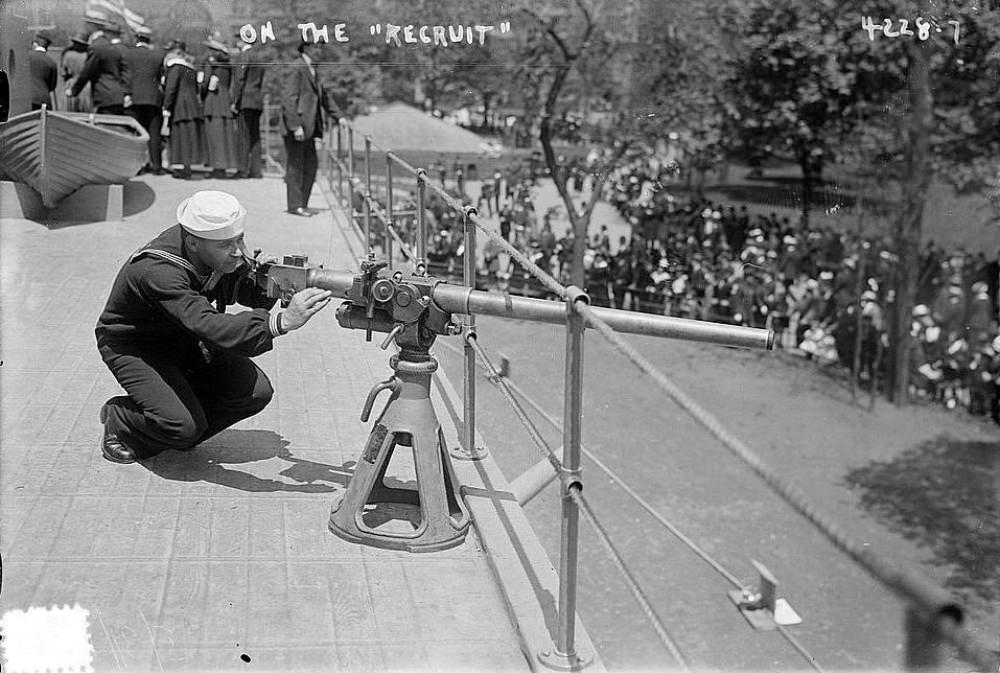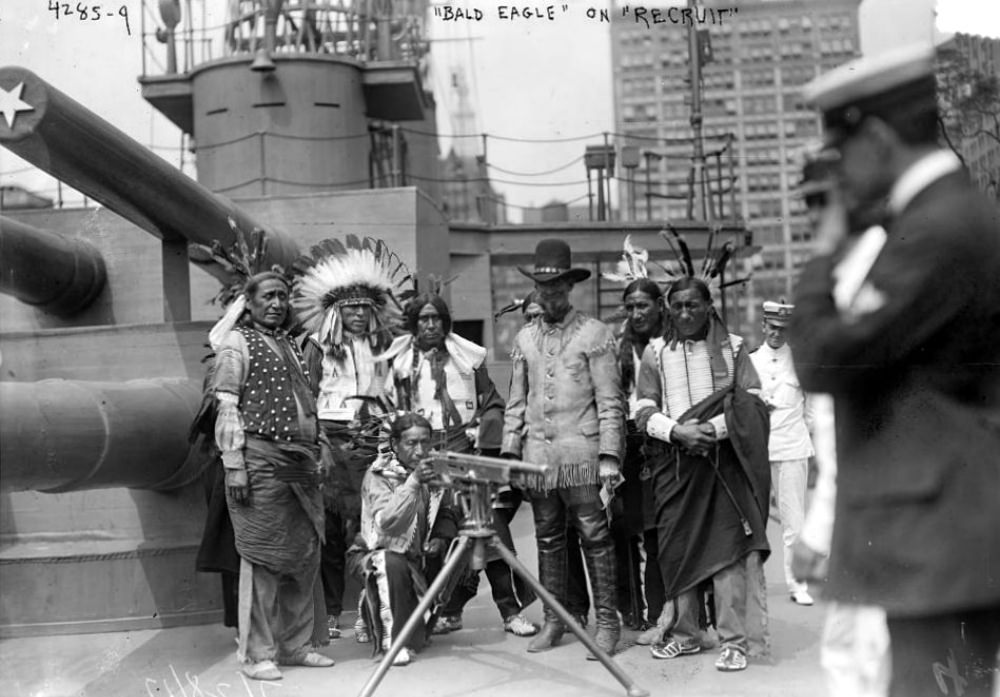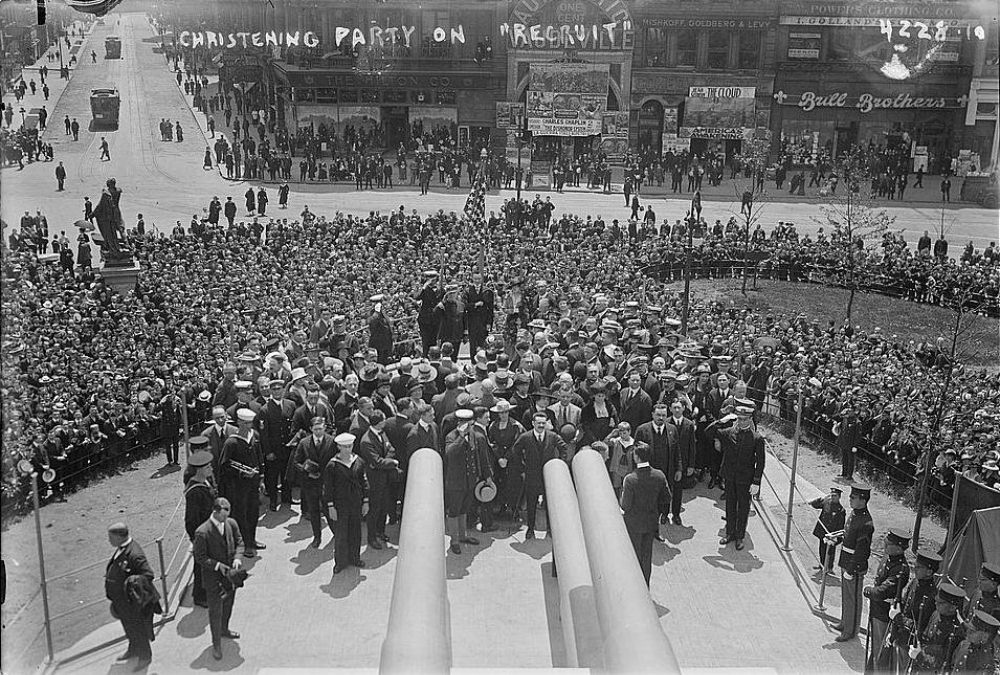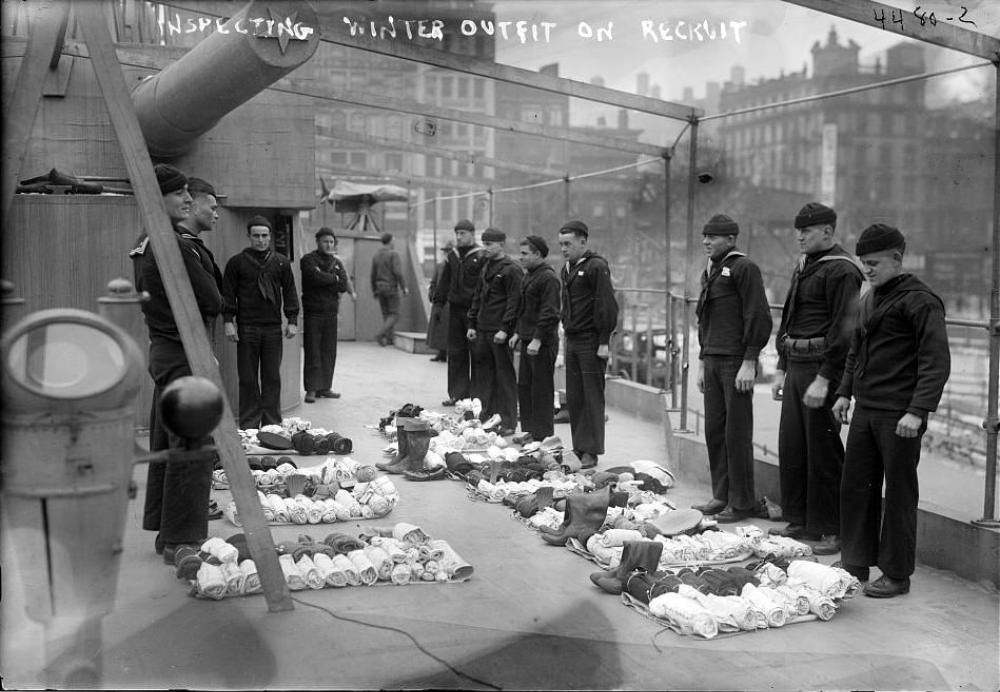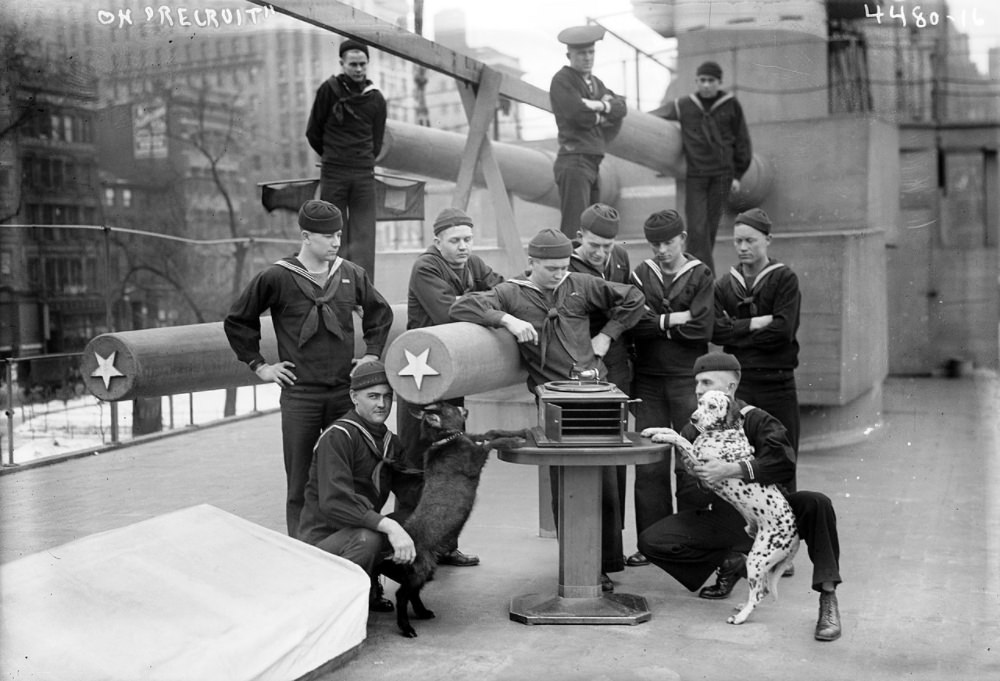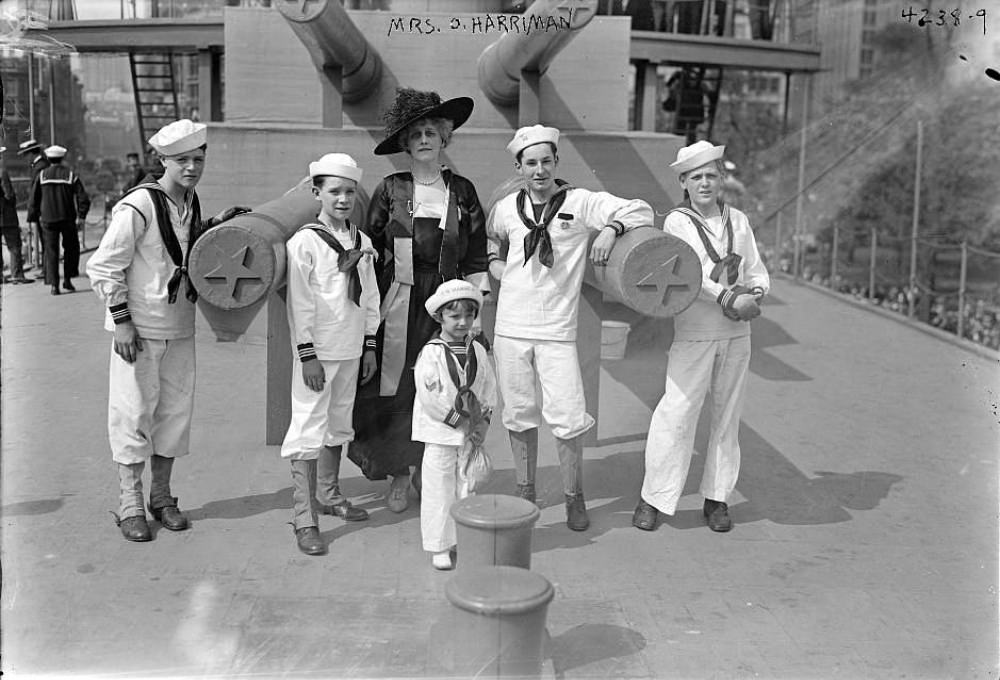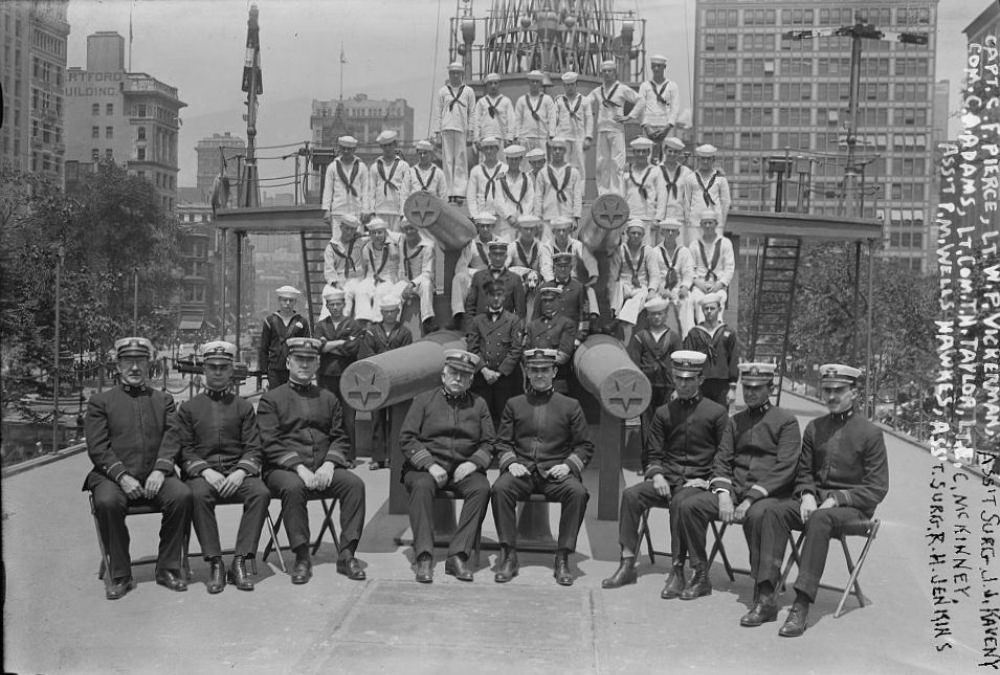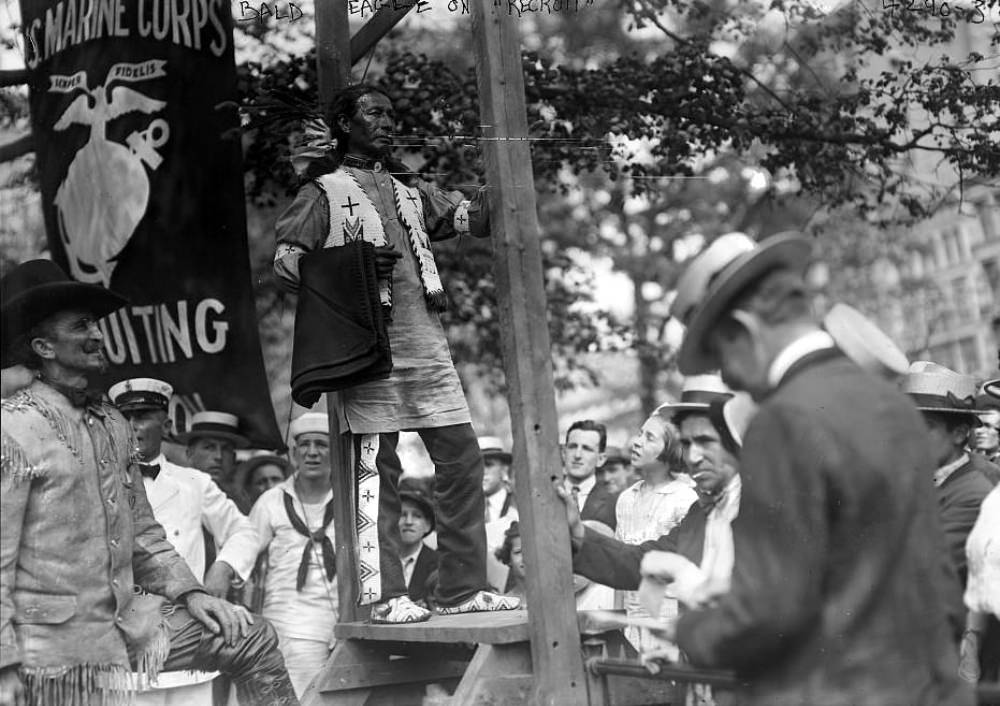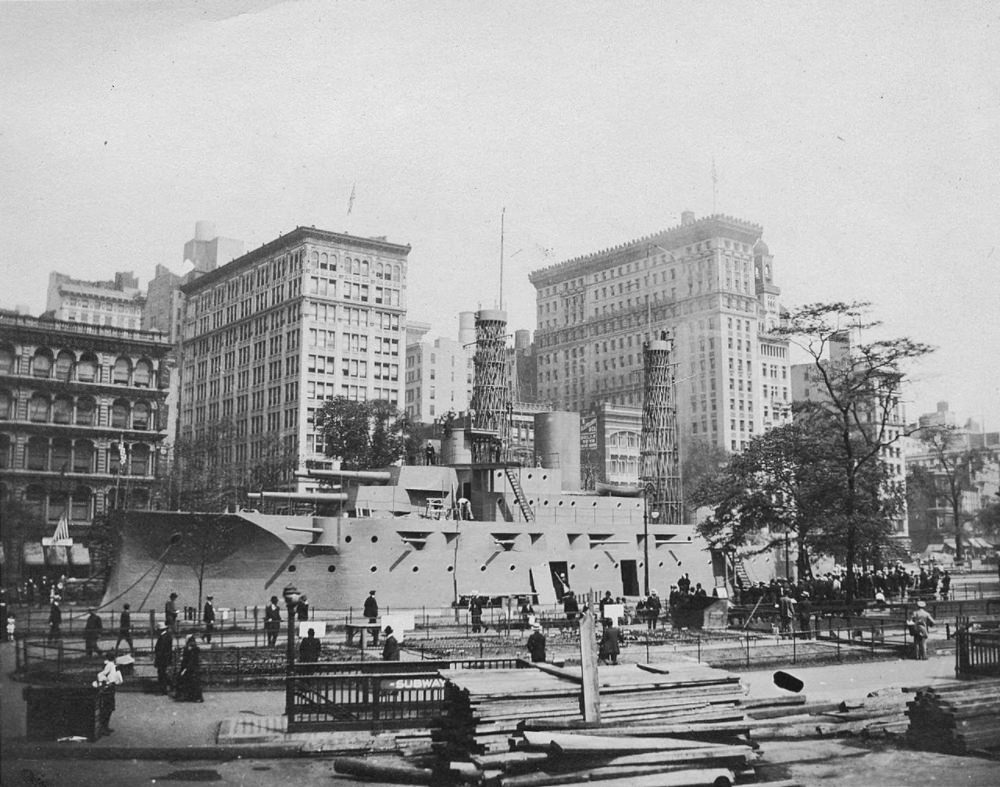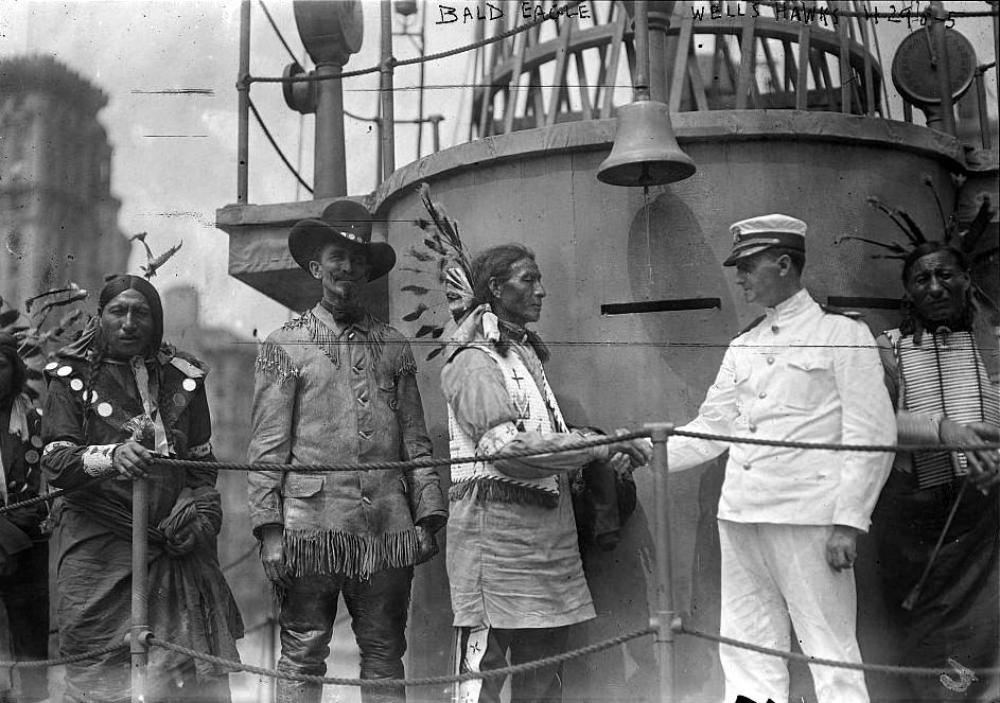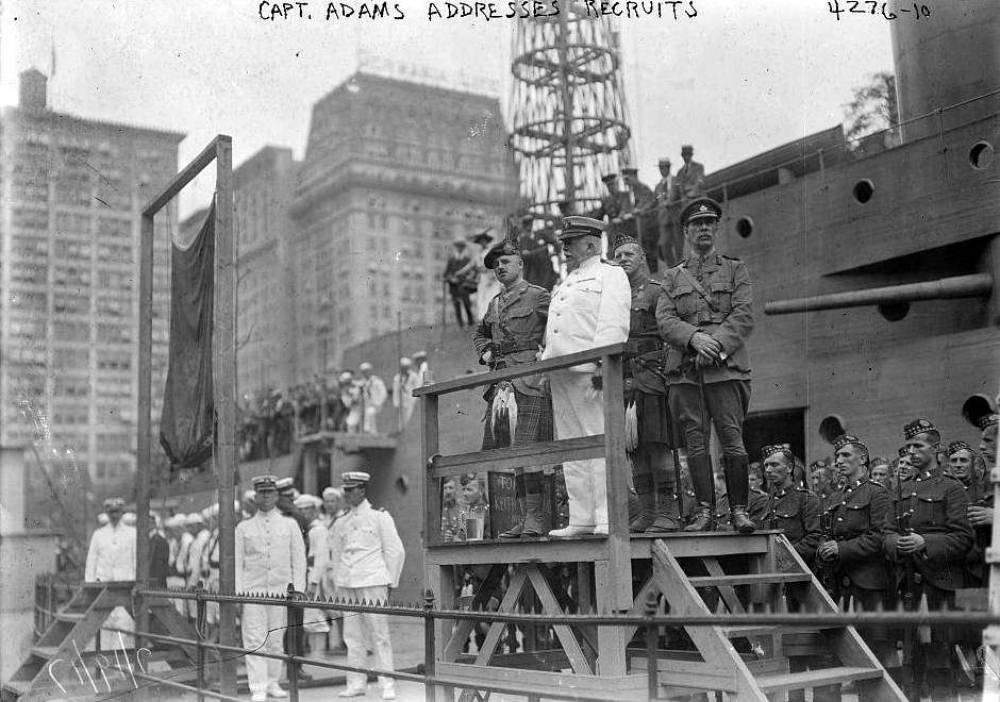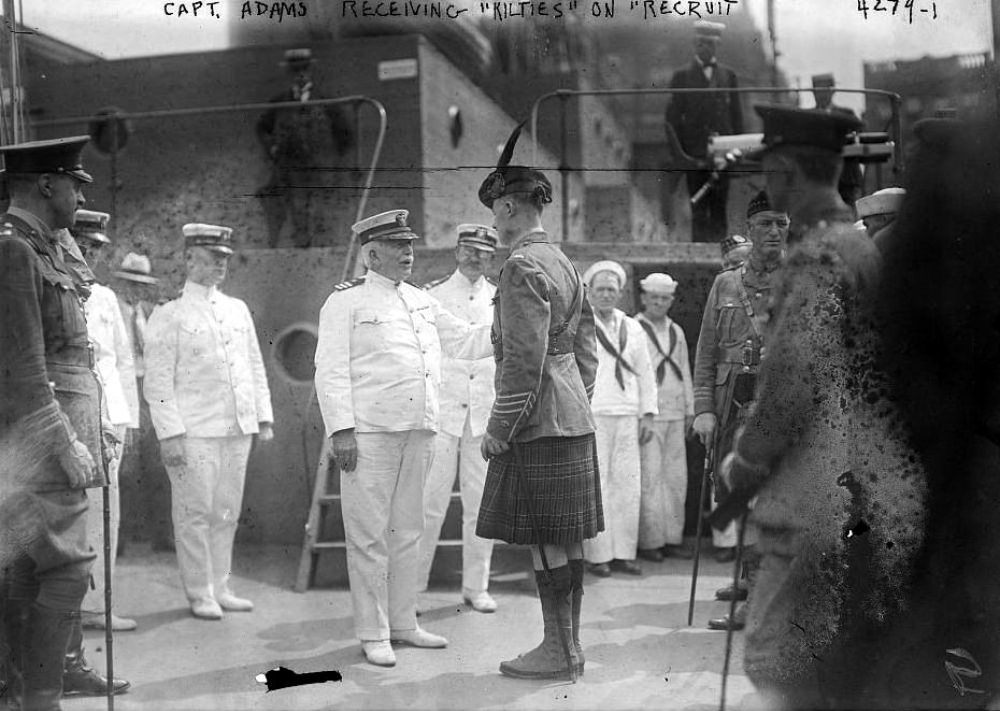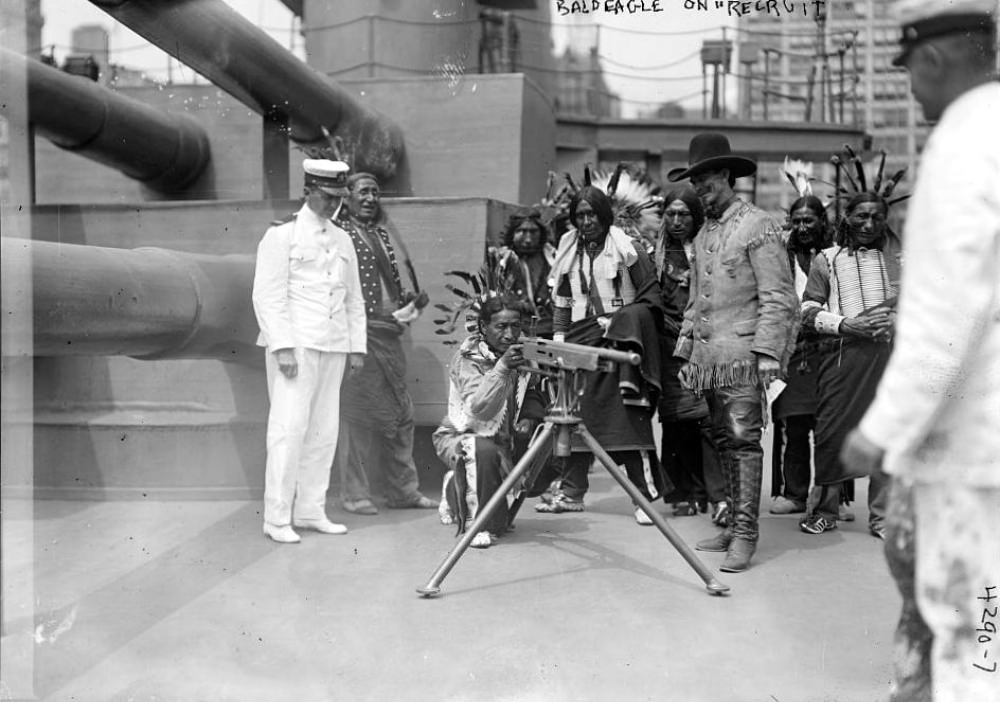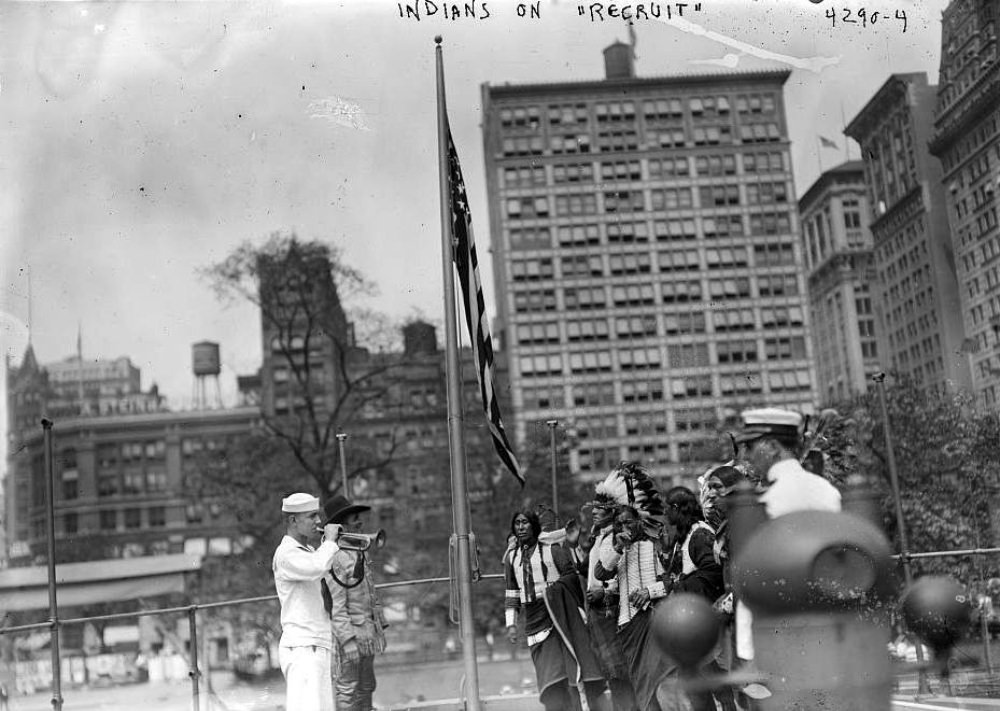The USS Recruit was a wooden mockup of a dreadnought battleship built by the United States Navy in New York City during the First World War. It was used as a recruiting tool. As a vessel of the U.S. Navy, Recruit was manned by trainee sailors and docked in Union Square from 1917 until the end of the war.
A fully rigged battleship, Recruit served as the U.S. Navy’s recruiting headquarters in New York City and was operated as a commissioned ship. The Recruit was a training ship and a recruiting office, under the command of Acting Captain C. F. Pierce and with a complement of 39 bluejackets from the Newport Training Station. Additionally, the Navy offered public tours and access to the ship, allowing civilians to understand how a Navy warship operated.
The accommodation aboard Recruit included a fore and aft examination room, an officer’s cabin with a wireless station, a heating and ventilation system capable of changing the air temperature within the ship ten times within one hour, and cabins to house its crew. Recruit’s silhouette matched the layout of seagoing U.S. battleships of the period thanks to two cage masts, a conning tower, and a single dummy smokestack. The ship’s ‘main battery’ was composed of six wooden versions of 14-inch (360 mm) guns arranged in three twin turrets. Ten wooden 5-inch (130 mm) guns in casemates served as the secondary anti-torpedo-boat weaponry, while two replicas of one-pounder saluting guns rounded out the ship’s ‘armament.’
Following its two years in Union Square, the Landship Recruit was decommissioned and dismantled in 1920, with the Navy intending to use it at Luna Park in Coney Island as a recruiting depot following its success at Union Square; Recruit struck its colors on March 16, 1920; The New York Times reported that the “Landship” had recruited 25,000 men for the U.S. Navy, 625 times more men than her crew and enough to crew twenty-eight Nevada-class battleships. The cost of moving the vessel to Coney Island exceeded the value of the materials used in its construction, so it was never reassembled. The materials were most likely used locally.


